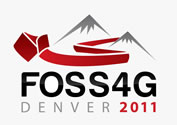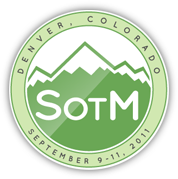Functional Coverages
Session Type:
Academic Session
Presenter(s):
Gennadii Donchyts, Deltares
Fedor Baart
In geospatial world an ISO19123 standard (schema for coverage geometry and functions) is used to define coverage as a feature that associates positions within a bounded space to feature attribute values. On the other side a Common Data Model (CDM) was designed at UCAR and proposed as an alternative view on coverage world, mainly focusing on its multidimensional aspects. The coverage api is very well suited for application in geospatial applications and the CDM has proved itself in numerical applications. For applications where data structures are less organized or require more complex relations, both data models are less applicable.
Examples of such problems the integrated can be: data structures used to define wind velocity as a continuous variable along the channels in the river network. Precipitation field defined as a time-dependent variable on a set of sub-catchments of a drainage basin, preserving association with sub-catchment features.
Our goal is to provide an API to the coverage data using a terminology and object model that is both appealing to computer scientists and numerical modellers and can be flexible enough to be used for a wider range of models. The challenge is to define a simple and intuitive API applicable in an integrated modelling domain.
The terminology of the api comes from the mathematical field of vector and multivariate calculus. In the present work a mathematical definition of vector-valued function is used to define coverage in the sense that its dependent variables (components) can be fully defined by a set of independent variables (arguments).
The new object model provides a basis for both continuous and discrete coverages including non-geospatial data structures such as time series. Different storage models for variables are implemented, based on NetCDF, GDAL, sqlite and memory.
The api is available as set of open source libraries developed in C# consisting of a multi-dimensional arrays library; scientific data structures library defining variables, functions, units of measure; geospatial extensions library built on top of GeoAPI.NET and NetTopologySuite, defining specialized coveragres, network coverage, feature coverage, regular grid coverage, unstructured grid coverage.
Speaker Bio:
Senior Advisor at Deltares. Current focus is on software design in the field of integrated environmental modelling. Member of OpenMI TC and OGC TC.
Schedule info
Time slot:
Wed, 09/14/2011 - 11:00am - 11:30am
Room:
Spruce 










